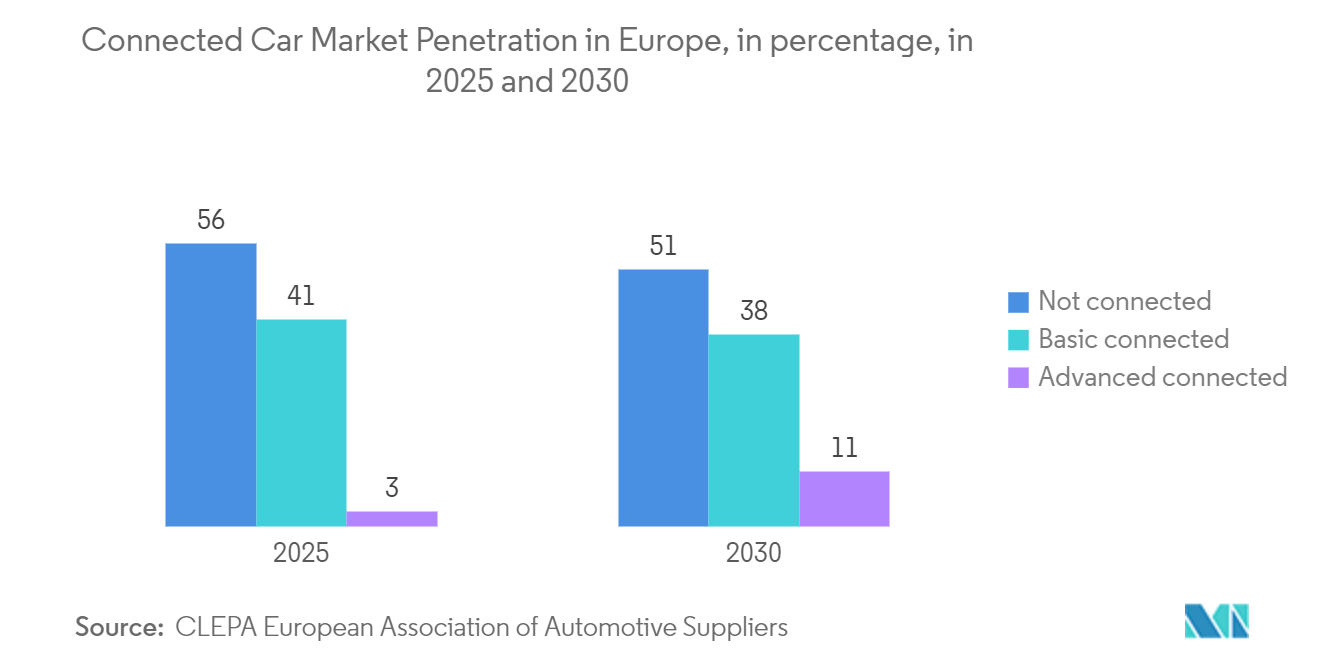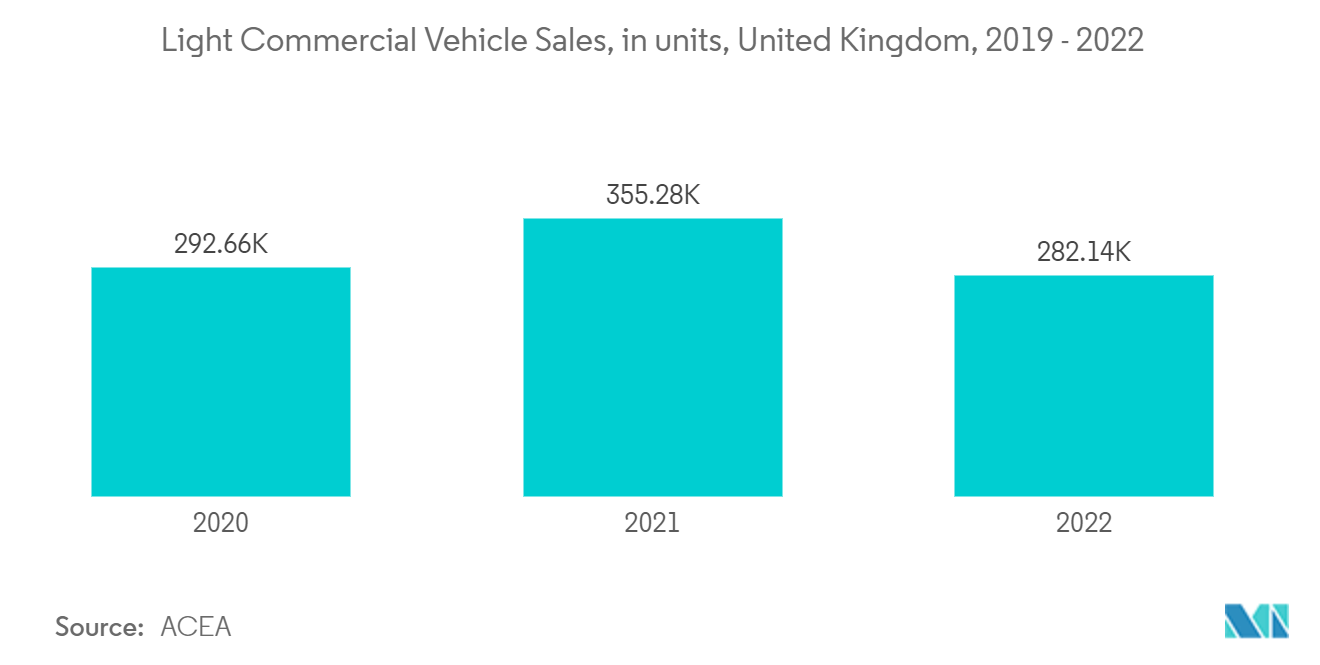Market Trends of Europe Telematics Industry
Passenger Vehicles to Witness Significant Growth
- One of the primary drivers for the segments' growth in the region is the rising number of accidents on EU roads, with a large proportion of victims being victims of work-related road collisions, according to WHO data. This has prompted government bodies to update their legislation concerning the safety and well-being of employees, with health and safety authorities issuing improved guidance for organizations to help them comply with legal responsibilities and enforce them.
- The use of the telematics ecosystem has resulted from the introduction of mobile resource management and machine-to-machine communication. Furthermore, telematics is widely used by industries such as oil, gas, mining, utilities, food, courier delivery, construction businesses, waste management, police and emergency organizations, and transit fleets such as motorcoach, public transit, taxi, and paratransit to move their workforce and goods across their area.
- Car shipments to Europe have increased dramatically during the last five years. The top three automotive firms - Volkswagen, PSA, and Renault Nissan Alliance - account for about half of the connected car shipments in Europe, owing to their dominance in passenger car sales in the region. The linked automobile is envisioned as a passenger vehicle with an embedded connection. In the future, most connected automobiles will have 4G and 5G-enabled Telematics Control Units (TCU).
- As the number of cars on the road grows, there is a greater requirement to maintain strong safety standards, which propels the industry forward. Furthermore, the market is expected to develop due to an increase in demand for fleet management systems in the logistics sector, regulatory mandates to improve vehicle and passenger safety, and an increase in the integration of tablets and smartphones in automobiles.
- The cost of telematics systems, including installation, maintenance, and feedback, continues to be a major impediment to the region's industrial growth. However, studies suggest that reductions in other costs, such as fuel damage and insurance premiums, are more than likely to compensate for the early start-up costs. Furthermore, according to research conducted by the European Commission on automotive technology, the usage of event data recorders has a positive benefit-to-cost ratio. Driven by such trends, more and more automotive manufacturers are entering the telematics industry landscape by providing factory-fitted telematics solutions.
- With the imminent arrival of value-added services such as mobile base video-based safety solutions, and vehicle performance service management solutions, growth opportunities are strengthening in the passenger vehicle telematics market in Europe. While penetration of embedded fleet management services (FMS) in large and medium fleets is relatively high, addressing challenges such as better business cases, awareness, and adequate training, are key to expansion within small fleets, which is encouraging more and more vendors to factory fit these solutions.

United Kingdom to Hold Major Share
- The telematics market in the United Kingdom will witness high growth due to the increasing production of light commercial vehicles such as small trucks, pick-up vans, etc. Commercial vehicle operators use telematics in the optimization of various elements, including truck maintenance, fuel usage, and others. Although the sale of light commercial vehicles fluctuates, the United Kingdom is second only to France in the total sale of LCVs in Europe, according to ACEA.
- The data generated by these vehicles give the companies valuable information to improve their efficiency by avoiding congestion, creating lower-stress driving environments, and the environmental impact on the vehicles, unlike traditional data tracking systems that only provide insights into driver behavior and real-time vehicle location.
- The growing e-commerce businesses and logistic industries in the country have increased the demand for light commercial vehicles, further creating a high-growth opportunity for the Europe telematics market in the commercial segment. According to the OICA Report (2022), the production of the light commercial vehicle stood at 80,210 units, an increase of 44% as compared to the previous year.
- Several automobile manufacturers are focusing on strategic collaboration or partnership to expand the production of light commercial vehicles in the country. For instance, in April 2023, B-ON and International Motors Limited, electric car brands, announced a collaboration to support the import and distribution of B-ON's four-vehicle lineup in the United Kingdom. Through this partnership, both companies aim to support electrification in the country and offer low-cost, zero-emission commercial fleet solutions for customers, further accelerating the demand for telematics in the European market.
- Telematics technology could be an efficient solution for the transport and logistics industry in managing driver shortages. This innovative technology offers real-time tracking and visibility of entire fleets and mobile assets, reducing the drivers' manual work. It is also essential to electronically monitor driving hours for compliance. In May 2023, Trakm8 announced a strategic partnership with CityFibre to equip CityFibre's fleet of vans with the RH600 4G Integrated Telematics Camera to improve fleet safety, help monitor driving behavior, and align with the company's broader sustainability targets.


